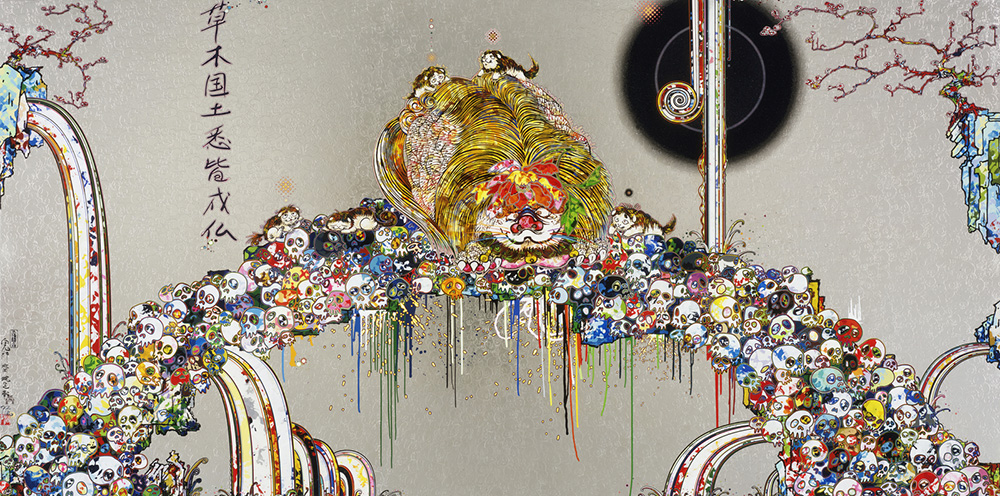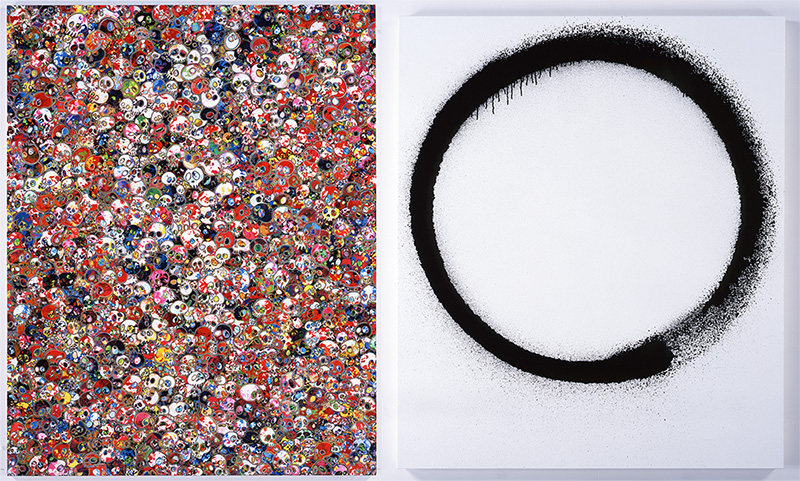ART CITIES:Moscow-Takashi Murakami
 As an artist, Murakami questions the lines drawn between East and West, past and present, high art and popular culture. Not stopping with the production of artworks, Murakami shocked the world with his collaboration with Louis Vuitton, when he challenged the divide between art and commerce.
As an artist, Murakami questions the lines drawn between East and West, past and present, high art and popular culture. Not stopping with the production of artworks, Murakami shocked the world with his collaboration with Louis Vuitton, when he challenged the divide between art and commerce.
By Dimitris Lempesis
Photo: Garage Museum of Contemporary Art Archive
The exhibition “Under the Radiation Falls” at Garage Museum of Contemporary Art is Takashi Murakami’s first major survey in Russia, and span several periods of the artist’s career from the mid-1990s to now, also features features new works. Also the exhibition features 18th & 19th Century Japanese engravings and paintings from the collections of the Pushkin State Museum of Fine Arts in Moscow. The exhibition consists of five sections that each one explores a particular phenomenon in Japanese culture which has been formally or semantically examined by Murakami. The first section, Geijutsu (Learning and Technique), focus on the genealogy of Murakami’s paintings and his ideas regarding the pictorial space and the artist’s craft. Having trained as a classical Nihonga painter, Murakami’s work is partly rooted in traditional Japanese painting, which is characterized by a certain flatness of image. This section also introduces a theme that will recur throughout the exhibition: the importance of daily routine and traditional labor, be it the making of engravings and paintings, ceramics, or sushi. The second section, “The Little Boy and the Fat Man” is a tribute to Murakami’s project “Little Boy” (2005), which explored the symbolism of August 1945 and the ways in which the Hiroshima and Nagasaki bombings transformed Japanese visual culture after the war. A disaster as a starting point for a new sensibility: from apocalyptic visions to a conscious escape from reality. This part of the exhibition focuses on visual rhymes between the works of Murakami, anime and manga, and historical documentation. The exhibition is be the first in Europe to include one of Murakami’s earliest installations, “Sea Breeze” (1992), a work that examines the events of August 1945 and is part of the collection of the 21st Century Museum of Contemporary Art, Kanazawa. The third section, “Kawaii” (cuteness) explores the intersections between Murakami’s work and the aesthetics of kawaii which is an integral part of contemporary Japanese culture. This part of the exhibition include manga and anime featuring world-famous characters (Pokémon, Hello Kitty); various environments (such as a mirror zone with toys); a screening room showing Murakami’s 2013 feature film “Jellyfish Eyes” and a space exhibiting the preparatory models for the film’s animated characters. The fourth section, “Sutajito” includes a recreation of part of his “factory”, in which the artist’s assistants work during the installation of the exhibition. This section presents the history of Murakami’s studio and of the production of a number of works through the use of archive materials. It also includes a board with the names, photographs, and work schedule of the installation team. The “wet studio” will provide a space for young Russian artists to learn Murakami’s painting techniques. A phantom chapter “Asobi & Kazari” is spread across the Museum’s non-exhibition spaces, demonstrating the playful aspect of Murakami’s work and his interest in decoration and patterns which are rooted in the Japanese artistic tradition. These parasite ornaments invading the Museum space create a transition from the exhibition to the world of Kaikai Kiki (the art production and art management corporation founded by Murakami in 1996), which occupys the Café and Bookshop and continue onto the facade of the building.
Info: Curator: Katya Inozemtseva, Garage Museum of Contemporary Art, Gorky Park, 9/32 Krymsky Val St., Moscow, Duration 29/9/17-4/2/18, Days & Hours: Mon-Sun 11:00-22:00, http://garagemca.org





